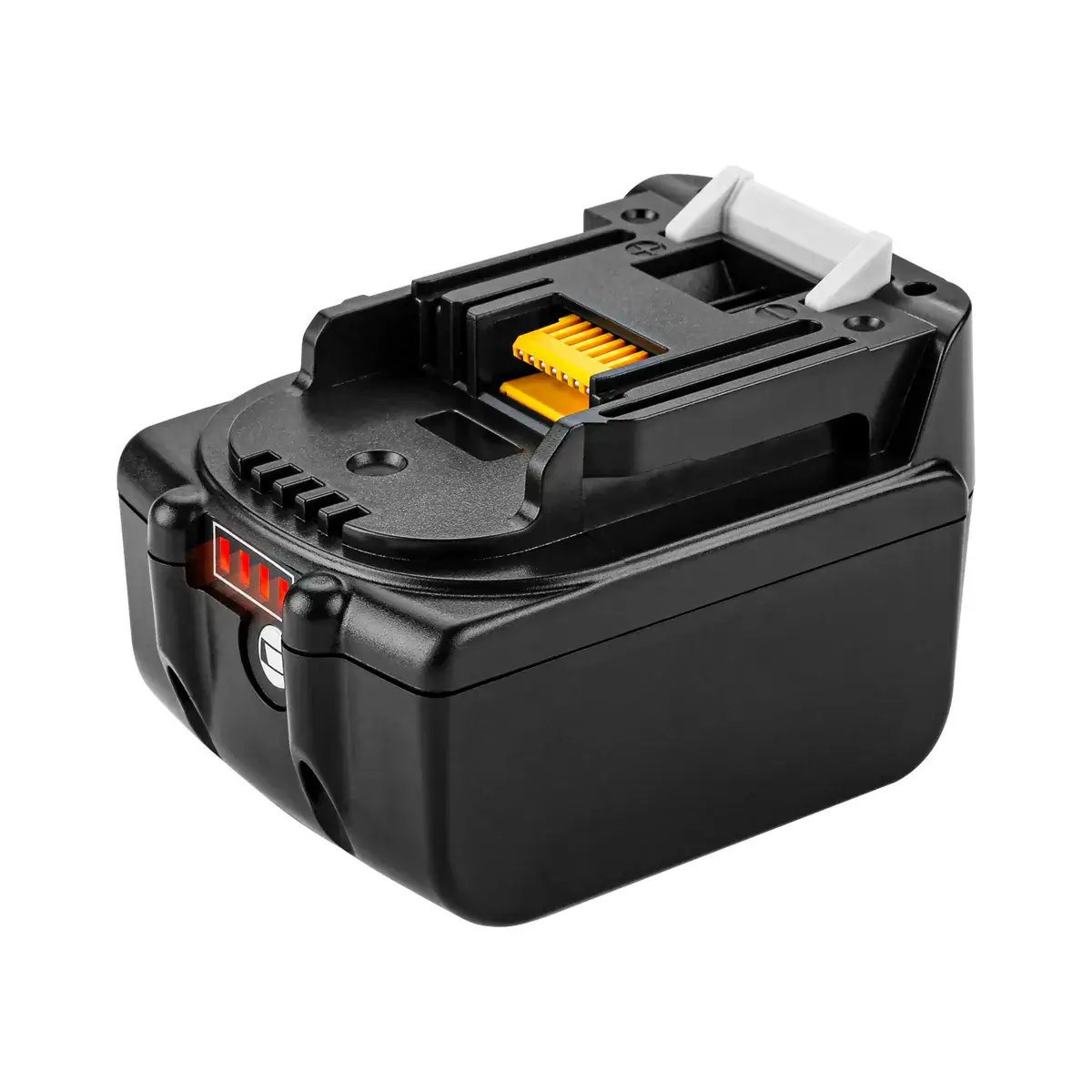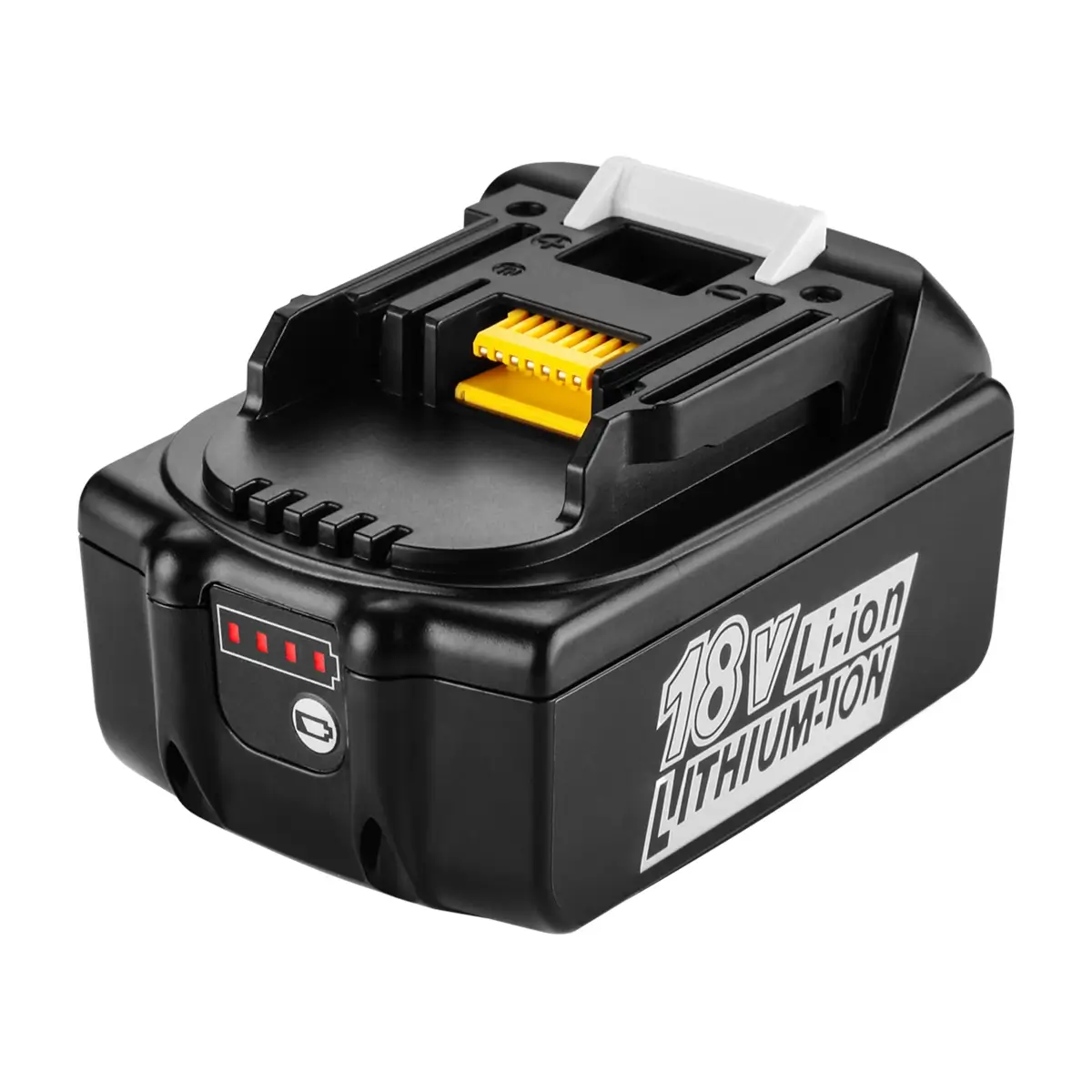Makita Power Tool Battery Common Problems and Solutions
Rechargeable Makita packs are built for longevity, but faults can still arise with age. This guide walks you through diagnosing and repairing the most common Makita battery problems—helping you maintain tool performance and avoid costly replacements.

Common Symptoms of Makita Battery Failures
Battery not charging: If your battery isn’t charging, check if the charger is properly connected to a power source and if the battery is inserted correctly into the charger. Also, ensure that the charger itself is functioning properly by testing it with another battery if possible. If the charger or battery is faulty, you may need to replace them.
Short battery life: If your Makita battery is not holding a charge for as long as it used to, it could be due to various factors such as age, usage patterns, or environmental conditions. Batteries degrade over time, so if your battery is old, it may simply need to be replaced. However, you can try optimising its performance by charging it fully before each use, storing it in a cool, dry place, and avoiding over-discharging or overcharging.
Battery overheating: Overheating can be caused by overuse or charging the battery too quickly. If your battery is getting excessively hot during use or charging, stop using it immediately and allow it to cool down. Make sure you’re using the correct charger for your battery and avoid fast charging unless it’s specifically recommended for your battery model.
Battery not fitting properly: Sometimes, the battery may not fit properly into the tool or charger. Ensure that you’re using the correct battery model for your tool and that it’s inserted securely. If there’s any debris or dirt obstructing the contacts, clean them carefully with a dry cloth.
Faulty battery: If none of the above solutions work and you suspect that the battery itself is faulty, you may need to contact Makita customer support or bring it to an authorised service centre for inspection and potential replacement.

1. What to Do if Your Makita Battery Refuses to Charge
- Clean Contacts: Wipe pack and charger terminals with isopropyl alcohol.
- Swap Charger: Test on a known‑good Makita charger.
- Reset Charger Electronics: Unplug for 10 s, then reconnect.
- Inspect Fuse: Some Makita chargers have user‑replaceable fuses—check your manual.
2. How to Address Rapid Capacity Decline
- Conditioning Cycle: Fully discharge and recharge the pack to recalibrate the BMS.
- Proper Storage Charge: Store at \~40% SoC when not in use (per Makita guidelines).
- Rotate Packs: Alternate between two (or more) batteries to avoid over‑cycling a single pack.
3. What to Do If Your Makita Battery Overheats
- Cool‑Down Period: If the pack exceeds 120 °F (49 °C), let it rest 15–30 minutes.
- Ventilation: Operate and charge in well‑ventilated areas—avoid enclosed boxes or direct sunlight.
- Temperature Limits: Do not charge above 100 °F (38 °C) or below 32 °F (0 °C).
4. How to Fix Intermittent Power Delivery
- Inspect Internal Connections: Open the pack housing and reseat bus bars and cell interconnects.
- Tighten Contacts: Ensure BMS wiring and bus bars are secure—vibrations can loosen them.
- Replace Worn Springs: Swap out flattened or corroded contact springs for solid connections.

FAQ: Makita Battery Troubleshooting
Q1: Why doesn’t my Makita battery charge?
Dirty terminals, a faulty charger, or BMS lockout after deep discharge are common culprits. Cleaning contacts, testing another charger, or power–cycling the charger can reset the pack.
Q2: Are Makita chargers universal?
No. Chargers are platform‑specific (12 V, 18 V, 36 V). Match the charger model (e.g., DC10WD vs. DC18RC) to your battery’s voltage rating.
Q3: How do I reset a Makita battery?
1. Place the pack on the correct charger.
2. Wait for LED error blinks (5–10 s).
3. Remove and reinsert the pack to reboot the BMS after an over‑discharge.
Key Takeaways & Best Practices
Most Makita battery issues—charging failures, sudden runtime drop, overheating, or power cut‑outs—are fixable without buying new packs. Always use genuine batteries and chargers, keep terminals clean, match your charger to the battery, and perform BMS resets or conditioning cycles as needed. Regular preventive maintenance and having a backup pack ready will keep your Makita tools running reliably for years.